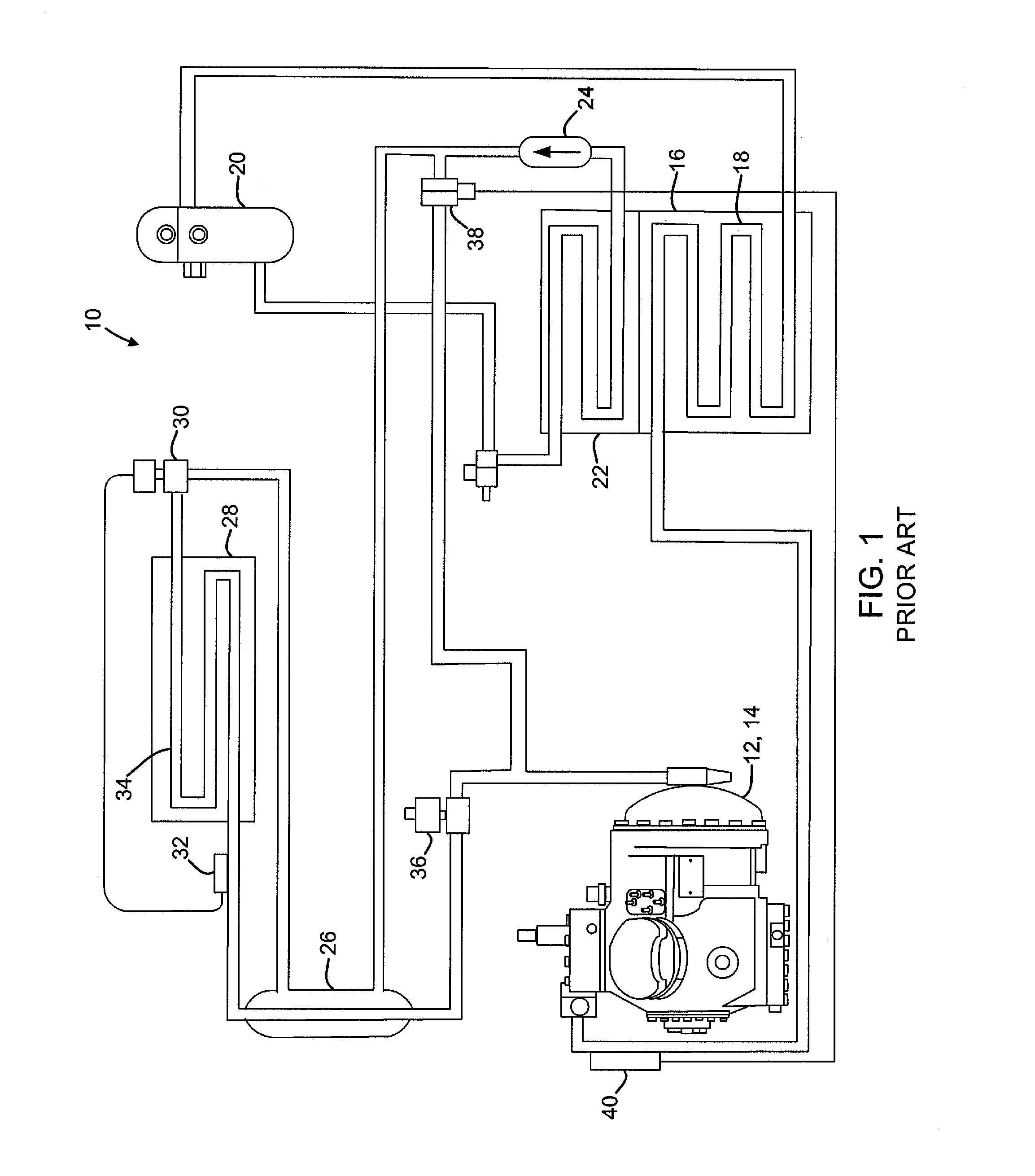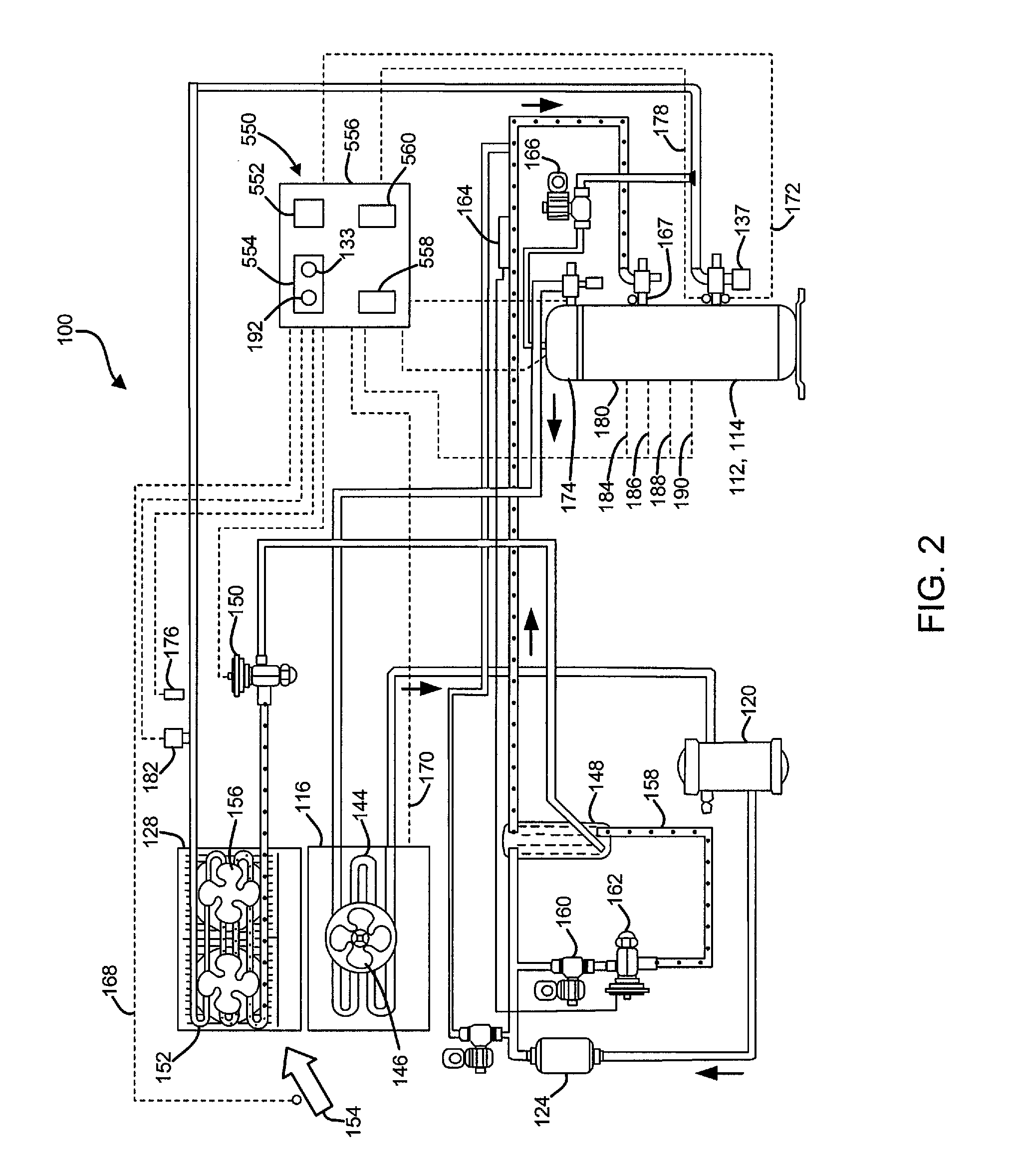Compressor discharge control on a transport refrigeration system
a refrigeration system and compressor technology, applied in refrigeration machines, lighting and heating apparatus, refrigeration safety arrangements, etc., can solve the problems of high compressor discharge temperature, refrigeration systems that operate, and high compression ratios that require additional compression temperature controls
- Summary
- Abstract
- Description
- Claims
- Application Information
AI Technical Summary
Benefits of technology
Problems solved by technology
Method used
Image
Examples
Embodiment Construction
[0018]FIG. 1 shows a schematic representation of an exemplary embodiment of a refrigerant vapor compression system 10, such as a conventional prior art transportation refrigeration system. Such a system 10 typically includes a compressor 12, such as a reciprocating compressor, which is driven by a motor 14 to compress refrigerant. In the compressor, the refrigerant is compressed to a higher temperature and pressure. The refrigerant then moves to a condenser 16, which may be an air-cooled condenser. The condenser 16 includes a plurality of condenser coil fins and tubes 18, which receives air, typically blown by a condenser fan (not shown). By removing latent heat through this step, the refrigerant condenses to a high pressure / high temperature liquid and flows to a receiver 20 that provides storage for excess liquid refrigerant during low temperature operation. From the receiver 20, the refrigerant flows through subcooler unit 22, then to a filter-drier 24 which keeps the refrigerant ...
PUM
 Login to View More
Login to View More Abstract
Description
Claims
Application Information
 Login to View More
Login to View More - R&D
- Intellectual Property
- Life Sciences
- Materials
- Tech Scout
- Unparalleled Data Quality
- Higher Quality Content
- 60% Fewer Hallucinations
Browse by: Latest US Patents, China's latest patents, Technical Efficacy Thesaurus, Application Domain, Technology Topic, Popular Technical Reports.
© 2025 PatSnap. All rights reserved.Legal|Privacy policy|Modern Slavery Act Transparency Statement|Sitemap|About US| Contact US: help@patsnap.com



